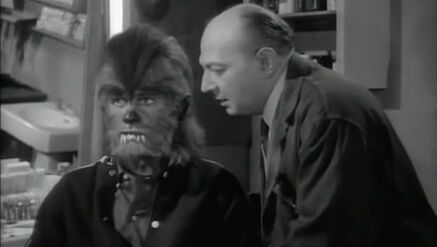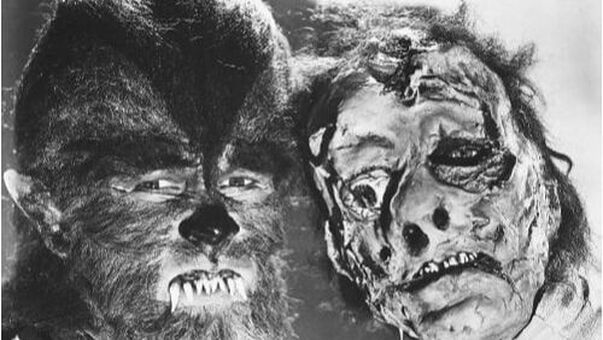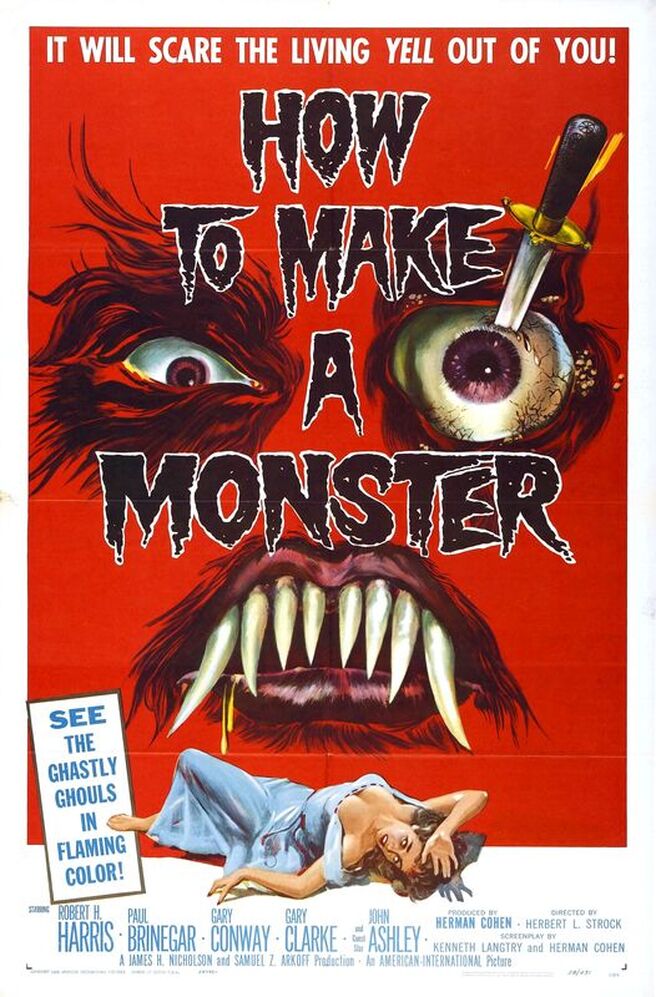[Tearing Through Werewolf Cinema] 'How to Make a Monster' was an Early Example of Meta Horror9/23/2020  Welcome to a weekly series in which Doris V. Sutherland takes readers on a trip through the history of werewolf cinema... In the late fifties, American International Pictures knew that it was on to something. Having given the world I Was a Teenage Werewolf and I Was a Teenage Frankenstein in 1957, the studio wasted no time in putting the two monsters onscreen together just as Universal had done in Frankenstein Meets the Wolf Man. Sort of, anyway. Directed by Herbert L. Strock from a script by Teenage Werewolf scribes Herman Cohen and Aben Kandel, How to Make a Monster (1958) gave monster movies a metafictional twist by heading behind the scenes for inspiration. Robert H. Harris stars as Pete Dumond, the make-up artist who, in the fictional world of the film, created the teenage werewolf and Frankenstein for American International Pictures (in reality, both monsters were designed by Philip Scheer). Taking great pride in his work, he loves his ghoulish offspring as much as he would real children—but not everybody shares his passion. The studio has come under new ownership, and the present executives feel that the public wants comedy, musicals, and cheery escapism. Monsters are passé, they declare, and when work wraps up on the studio’s current horror film—a werewolf/Frankenstein crossover—Pete Dumond will be out of a job. But Dumond is too passionate an artist to take this lying down. He devises a plan to hypnotise the young actors playing the werewolf and Frankenstein and compel them to kill the executives who pulled the plug on the studio’s horror. That way, his monstrous children shall truly have their revenge… How to Make a Monster’s meta treatment of horror films wasn’t entirely new--The Golem and the Dancing Girl went over similar ground back in the silent era—but it was still unusual for a film made in 1958. This stripe of irony and genre-awareness wouldn’t fully come into vogue until the nineties, with the likes of Scream, Wes Craven’s New Nightmare, and, a little later, Shadow of the Vampire. That being said, How to Make a Monster captures the mood of its time. Contrary to what the film’s fictional executives say, monster movies were in a very healthy state circa 1958. Between Hammer and Shock Theater, the genre was on a definite upswing; meanwhile, a fan culture spearheaded by Famous Monsters of Filmland magazine shone light on the behind-the-scenes aspects of the films. How to Make a Monster (a title which could easily have been shared by a Famous Monsters spin-off magazine) taps into this, offering a self-referential treat for horror fans of the period. Gary Conway reprises his role as the teenage Frankenstein, although Gary Clarke takes over from Michael Landon as the werewolf. The villainous make-up artist dresses as a Mr. Hyde-like character to carry out one murder, and we even get a quick plug for Horrors of the Black Museum, which was released the following year. As a final treat, the full-colour climax—owing something to Mystery of the Wax Museum—has a confrontation with the evil Dumond, gloating maniacally while surrounded by his previous creations. What twelve-year-old monster kid wouldn’t want to grow up to be like him? AIP’s monster cycle made a much quicker descent into self-parody than Universal’s did, but the results are rather more interesting. Instead of the knockabout antics of Abbott and Costello, we get a film that is at once a broad satire of Hollywood, a love letter to monster movies, and an entertaining horror romp in its own right. How to Make a Monster stands up fairly well today and has added appeal as a snapshot of the time when monsters came back. By Doris V. Sutherland Enjoy Doris' writing? Leave her a tip here through Ko-fi!
0 Comments
Leave a Reply. |
Archives
March 2023
|


 RSS Feed
RSS Feed